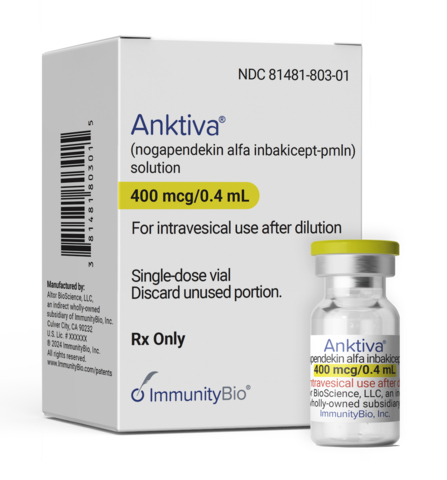Leading global biopharma company AstraZeneca along with Ionis Pharmaceuticals, a pioneer in RNA-targeted therapy, received approval from the US Food and Drug Administration (FDA) for their innovative drug Wainua (eplontersen) for treating polyneuropathy associated with hereditary transthyretin-mediated amyloidosis in adults, commonly known as hATTR-PN or ATTRv-PN.
Wainua is the only FDA-approved drug for the treatment of ATTRv-PN that can be self-administered via an auto-injector.
There are about 40,000 patients with ATTRv-PN worldwide.
“Many people living with hereditary transthyretin-mediated amyloid polyneuropathy are unable to fully enjoy their lives because of the relentless, progressive and debilitating effects of the disease. Approval of Wainua represents a meaningful advancement in treatment, one that gives those who are living with transthyretin-mediated amyloid polyneuropathy help managing the disease,” said Michael J. Polydefkis, professor of Neurology at Johns Hopkins University School of Medicine and an investigator in the Phase III NEURO-TTRansform study on which Wainua’s FDA approval was grounded on, in the news release.
Hereditary transthyretin amyloidosis (hATTR), formerly known as familial amyloid polyneuropathy, is a rare condition caused by mutations in the gene responsible for encoding transthyretin (TTR). This disorder is marked by the extensive deposition of amyloid in extracellular spaces, resulting in dysfunction across various organs and tissues. Diagnosing hATTR amyloidosis presents a substantial challenge for neurologists due to the high variability in clinical manifestations and the impact on multiple organ systems.
In individuals affected by ATTR, which includes both hereditary and wild-type (non-hereditary) variants, the TTR protein forms fibrils that accumulate in various tissues. These tissues comprise peripheral nerves, the heart, gastrointestinal system, eyes, kidneys, central nervous system, thyroid and bone marrow. The accumulation of TTR fibrils disrupts the usual functions of these tissues. As the buildup of TTR protein fibrils advances, it results in heightened tissue damage, exacerbating the disease and ultimately leading to a reduced quality of life and eventual mortality.
XTALKS WEBINAR: Streamlining IRT in clinical trials: Simplify, optimise, succeed
Live and On-Demand: Thursday, February 15, 2024, at 10am EST (4pm CET/EU-Central)
Register for this free webinar to discover how streamlining interactive response technology (IRT) in clinical trials can help achieve business goals for accelerated study initiation, greater cost containment and more efficient resource utilization, to ultimately support the overarching aim of bringing innovative treatments to patients sooner.
Wainua’s active component, eplontersen, is a transthyretin-targeted antisense oligonucleotide (ASO) chemically fused to a ligand comprising three N-acetyl galactosamine (GalNAc) residues. This conjugation facilitates ASO delivery to hepatocytes. The ASO-GalNAc complex promotes the degradation of both mutant and wild-type TTR mRNA by binding to TTR mRNA, resulting in reduced serum TTR protein levels and decreased TTR protein deposition in tissues.
Safety and Efficacy of Wainua
The FDA’s approval of Wainua is underpinned by compelling clinical data. In the Phase III NEURO-TTRansform study, individuals receiving eplontersen consistently exhibited enduring benefits in relation to the three primary endpoints: serum TTR concentration, neuropathy impairment evaluated using the modified Neuropathy Impairment Score +7 (mNIS+7) and quality of life (QoL) as assessed by the Norfolk Quality of Life Questionnaire-Diabetic Neuropathy (Norfolk QoL-DN).
Eplontersen delivered a remarkable least squares (LS) mean reduction of 82 percent in TTR serum concentration from baseline at 65 weeks, a stark contrast to the 11 percent reduction observed in the external placebo group (p<0.001).
Regarding neuropathy improvement, 47 percent of patients receiving treatment displayed positive changes at 66 weeks when compared to baseline, in contrast to the 17 percent seen in the external placebo group. Among those who completed the study, 53 percent of treated patients demonstrated improvements in neuropathy at 66 weeks compared to baseline, as opposed to the 19 percent in the external placebo group.
Regarding QoL improvements, 58 percent of patients under treatment reported positive changes at 66 weeks when compared to their baseline, in stark contrast to the 20 percent observed in the external placebo group. Among those who completed the study, 65 percent of treated patients displayed improvements in their QoL at 66 weeks compared to baseline, while only 23 percent experienced such improvements in the external placebo group.
Furthermore, the clinical study highlighted the favorable tolerability profile of Wainua. The primary adverse reactions mainly included decreased vitamin A levels, vomiting, proteinuria, injection site reactions, blurred vision and cataract. These adverse effects were observed in approximately 5 percent of patients receiving treatment with Wainua.
Amvuttra: Alnylam’s Similar Treatment on the Market
In 2022, Alnylam, a US-based biopharma company with expertise in RNA interference therapeutics for genetically defined diseases, received FDA approval for its drug Amvuttra (vutrisiran) for the treatment of hATTR. Administered via subcutaneous injection once every three months, Amvuttra effectively addresses the polyneuropathy associated with hATTR in adults.
Wainua is scheduled to launch in the US in January 2024. Although the official list price for Wainua has not been revealed, analysts at William Blair project that it is expected to align closely with Alnylam’s Amvuttra (vutrisiran) at an estimated annual cost of around $463,500.














Join or login to leave a comment
JOIN LOGIN